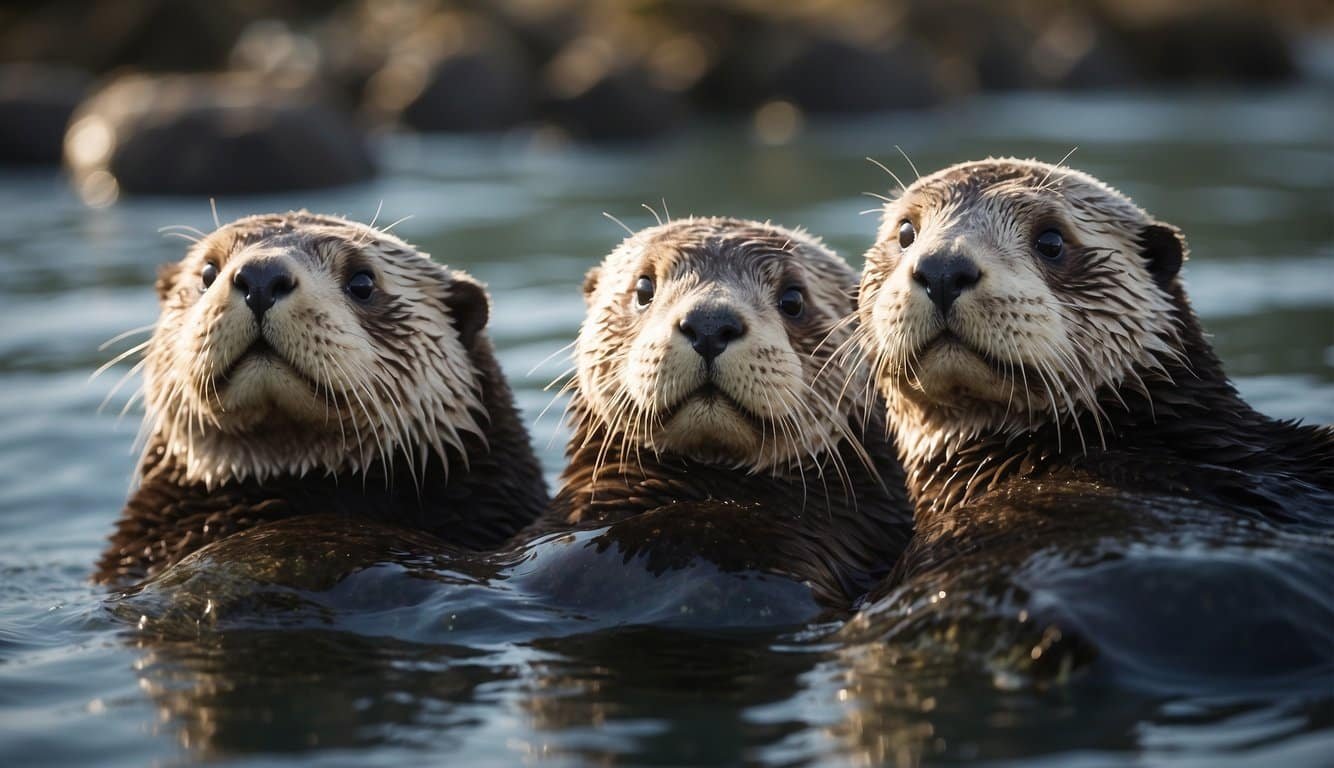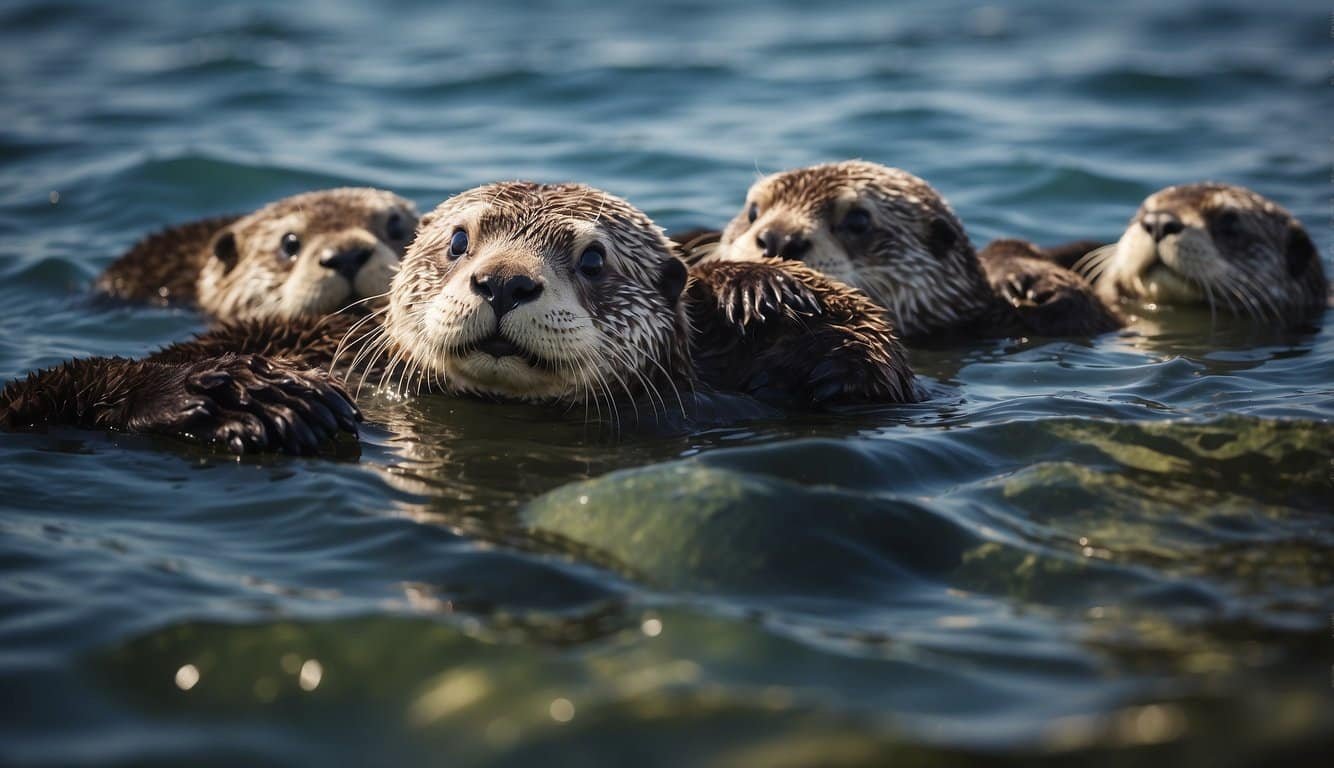Overview of Sea Otters
Sea otters, known scientifically as Enhydra lutris, are fascinating marine mammals notably recognized for their dense fur and significant role in marine ecosystems. These charismatic creatures inhabit the North Pacific Ocean, from Alaska to California.
Physical Characteristics
The sea otter is smaller than most marine mammals but is the heaviest member of the weasel family. Adult sea otters typically measure around 4 feet in length and can weigh between 30 to 100 pounds. They boast the densest fur in the animal kingdom, with up to a million hair follicles per square inch. This dense fur is vital for their survival, as sea otters lack the blubber that other marine mammals rely on for insulation in cold waters. Their ears and nostrils close when submerged to prevent water from entering, and their hind feet are webbed to aid in swimming.
Habitat and Distribution
Sea otters are found exclusively in the North Pacific Ocean, with their range stretching from the northern Japanese islands to central Baja California in Mexico. They spend the majority of their lives in coastal waters and are particularly associated with kelp forests, which offer abundant food and shelter. These habitats are usually no deeper than 60 feet, which allows sea otters to dive and forage for food with relative ease. The populations off the coasts of Alaska, California, and Russia are the most well-known, but conservation efforts are ongoing to maintain and support the growth of sea otter communities throughout their geographic range.
Behavior and Diet

Sea otters are fascinating marine mammals known for their remarkable foraging strategies and complex social structures. They exhibit diverse behaviors, especially when searching for food in their aquatic habitats, and their diet largely consists of marine invertebrates like clams, mussels, and crabs.
Foraging Tactics
Sea otters have developed unique foraging tactics that set them apart in the marine world. They are known to use rocks as tools to break open hard-shelled prey such as clams and mussels. These resourceful otters often keep a favorite rock tucked into their armpit to use when dining. Their foraging behavior is adapted to their habitat, with otters in areas with soft-sediment benthos focusing on preys like crabs, while others in rocky areas might favor different shellfish.
- Diving: Sea otters are adept divers, with their dives lasting up to five minutes as they search the sea floor.
- Surface Behaviors: After diving, they float on their backs at the surface, using their chests as tables to crack open their catch.
Social Structures
Despite their at times solitary foraging habits, sea otters are known for their intricate social structures. They are often observed floating in groups, known as rafts, which can consist of a few individuals to hundreds. These raft gatherings are not just social; they also play a role in grooming and resting behaviors which are essential for thermoregulation and buoyancy.
- Grooming: Grooming is a significant part of their daily routine, helping them maintain their insulating fur.
- Social Interactions: Sea otters engage in various social behaviors including play, aggressive encounters, and cooperative foraging.
Conservation and Threats
The journey of sea otter conservation is fraught with challenges, from their tenuous comeback from the brink of extinction to the modern threats that still loom large over their well-being.

Endangered Status
Once hunted to near extinction for their dense, luxurious fur, sea otters have been a poignant symbol of wildlife conservation. They were granted a much-needed reprieve with the implementation of maritime laws that aimed to curb the fur trade and restore their populations. Despite being a celebrated endangered species, their comeback is precarious, as they continue to face various threats that challenge their survival in the wild.
Human Impact
Sea otters are also significantly affected by human activity. Oil spills have had devastating effects on their health and on the kelp forest ecosystems where they reside. As a keystone species, sea otters play a crucial role in maintaining the diversity and health of these marine environments by preying on marine invertebrates such as sea urchins that would otherwise devastate kelp forests. Pollution and climate change further exacerbate the plight of sea otters, altering their habitats and food sources, and making conservation efforts even more vital to ensure their survival.

